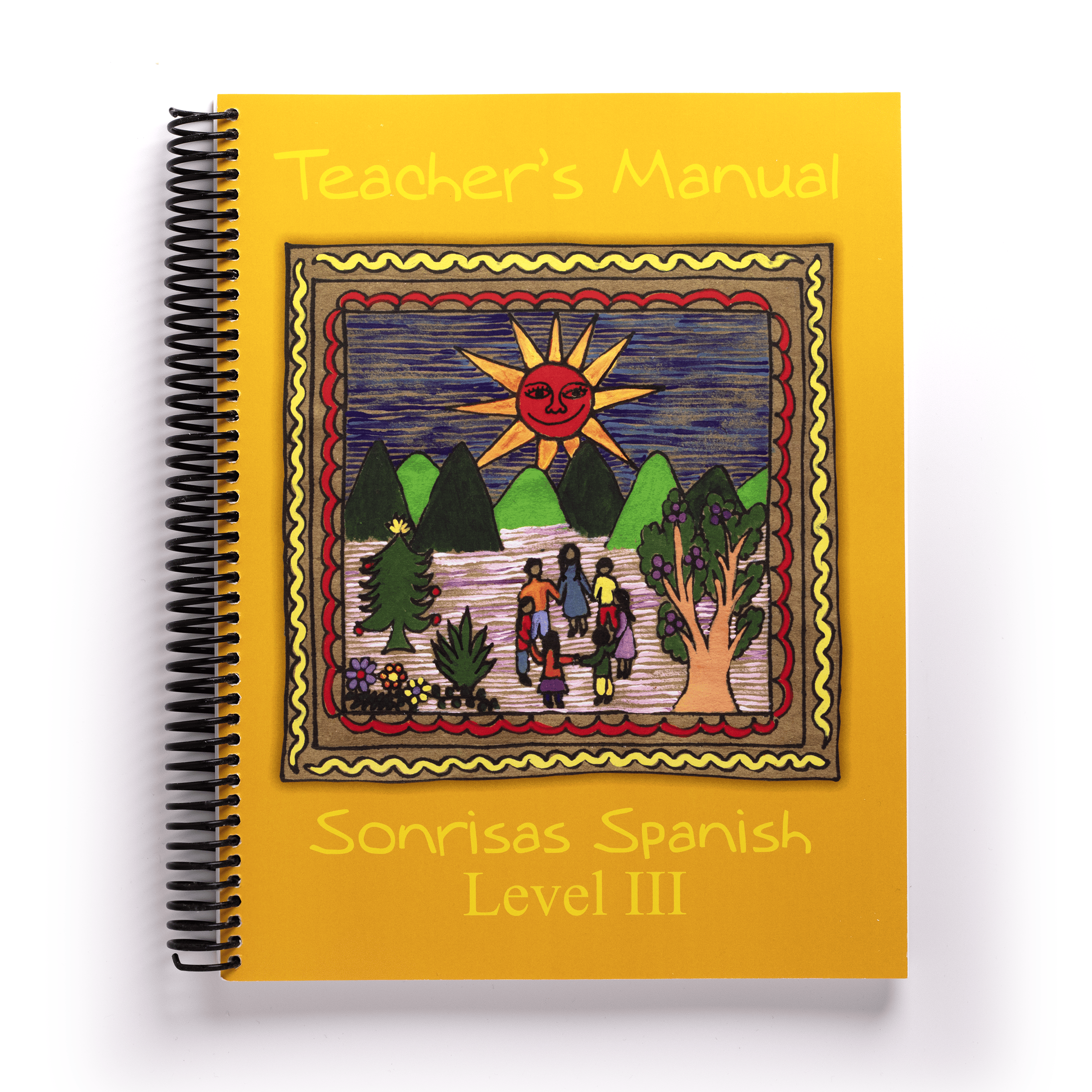
Are you a middle school Spanish teacher struggling to find the right approach for you and your students? Many Spanish books for middle schoolers rely too much on one approach. They either focus primarily on grammar and rote learning, or they go too far into immersion without any context to connect learners to the content.
Neither approach serves the needs of all the different learning styles you encounter with middle school students. Logical, analytical learners need a direct instructional style that focuses on structure, form, and grammar. Social, linguistic learners need an instructional style that focuses on using the language and engaging with their peers.
We recommend trying a blended approach. This is what we offer with the lessons in Sonrisas Level III which we designed specifically for middle school Spanish. Let’s take a look at how our unique, blended approach engages learners of all styles and provides a fun and dynamic learning experience for your students.
Let’s state the obvious: it is very difficult to teach culture using immersion. The complexities and nuances of cultural themes make it very challenging for learners to understand them in a different language. This is why it is appropriate to use English to teach culture.

Throughout the discussion, students have the opportunity to compare and contrast the cultural theme to their own culture. The depth of this type of conversation would be way too challenging to do in Spanish. It works well to do this in English because students analyze cultural topics at a high level and gain valuable insights.
Learning the grammar of a new language is very challenging and can best be done in English using a direct instructional style. What this means is that the teacher leads the instruction by explicitly presenting the rules and structure of the grammar in a straightforward manner. This usually includes guided practice in a whole group setting. Then students practice the grammar with a grammar exercise.
It must be said that this looks like teaching grammar in isolation which should be avoided. This is why, in the Sonrisas Level III lessons, we weave the grammar concept throughout the following lessons in a fun, contextual, and conversational way—more about that below.
The thing is, grammar is inherently structured and concrete, so it makes sense to teach it this way. This approach serves different types of learners. The more logical learners will appreciate having the rules and structures to refer to when they engage in conversational activities. The more linguistic learners will forge ahead conversationally with a basis of understanding of the grammar.
Immersion is of course the best way to build student’s comprehension and speaking skills. The challenge with middle school students is finding a way to immerse them in Spanish which is engaging. We have found the TPRS Storytelling® method to be very effective at this.
What happens with TPRS Storytelling is that the teacher and students create a story together. The Level III Teacher Manual provides a script of the story for the teacher. The teacher pre-teaches all the Spanish vocabulary for the story. Then the teacher asks the students for certain details to the story. When students provide a new detail, the teacher has a cycle of questions that she asks about it. What ends up happening is that students get lots of repetition with vocabulary and phrases that they understand.
Because this is all done in Spanish, students gain a really good ear for what sounds correct in Spanish, and they boost their speaking skills. The Sonrisas Level III lessons weave the grammar into each TPRS story, so students now get to use it in context and practice it conversationally.
Another part of the Level III lessons is a whole group reading. This is done entirely in Spanish. The reading incorporates everything from the thematic unit—the cultural theme, the grammar, and the vocabulary and phrases learned in the TPRS story. This immersion activity helps students gain reading fluency with familiar content.
Middle school students are inherently social. This is why partner activities work so well with this age group. Learners benefit by engaging in real communication in a peer-to-peer mode.
Every lesson in Sonrisas Level III has a corresponding Partner Time activity. Students partner up, they interpret text and/or images, and then they use that information to complete some task which requires them to communicate. Then, there is usually a presentational component in which the partners present information either to each other or to the whole group.
In this manner, the Partner Time activity engages students in the three modes of communication—the interpretative, the interpersonal, and the presentational. Utilizing the three modes of communication helps to build student’s awareness of the context and different purposes of communication.
You don’t have to be stuck using Spanish books for middle schoolers that focus on one style of instruction. A blended approach, such as the one used in the Sonrisas Level III curriculum is very effective. It gives learners of different styles the opportunity to engage with the content of the lessons at different stages and in different ways. When you use a blended approach to your instruction, you ensure that all students have the opportunity to learn Spanish.

